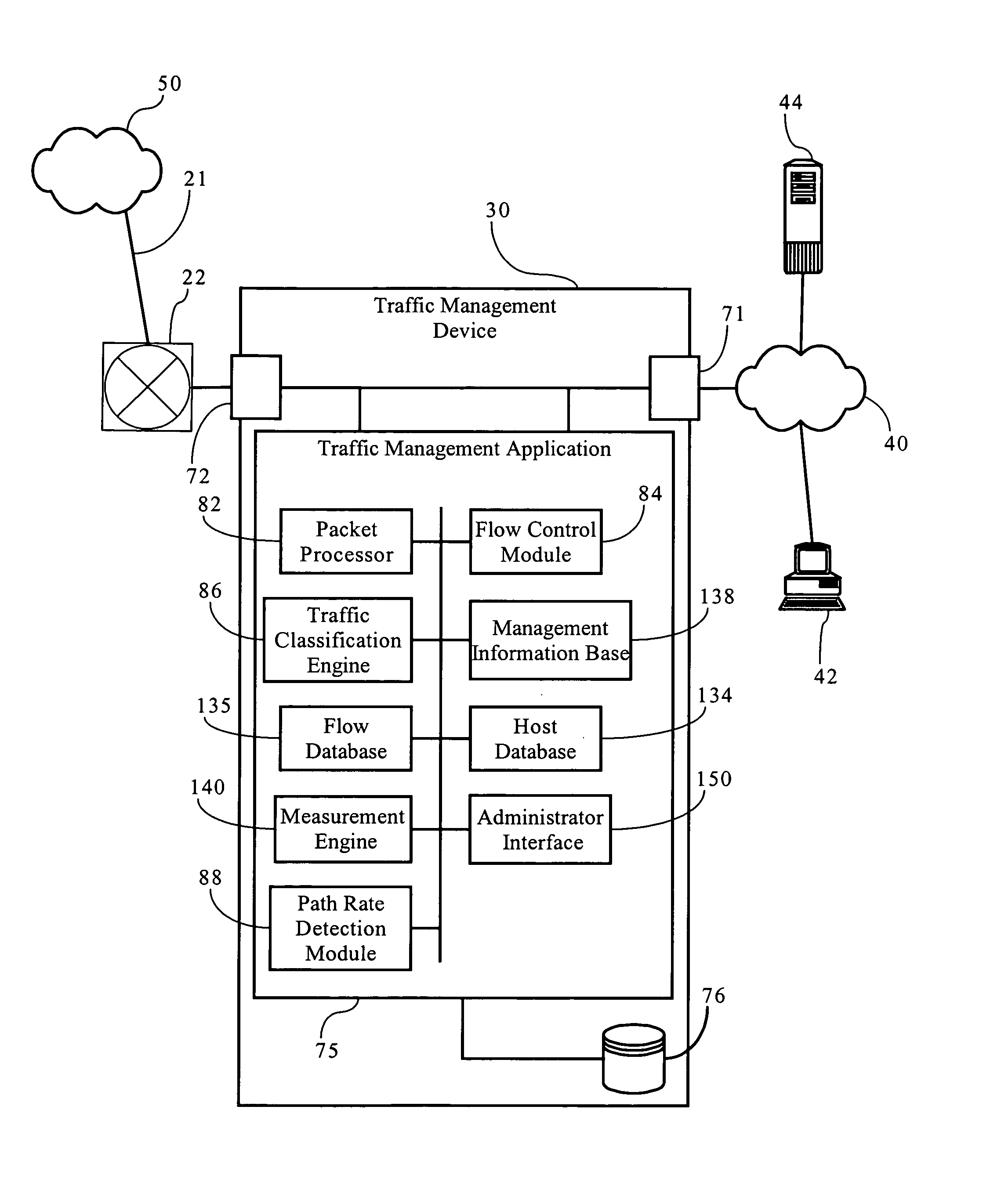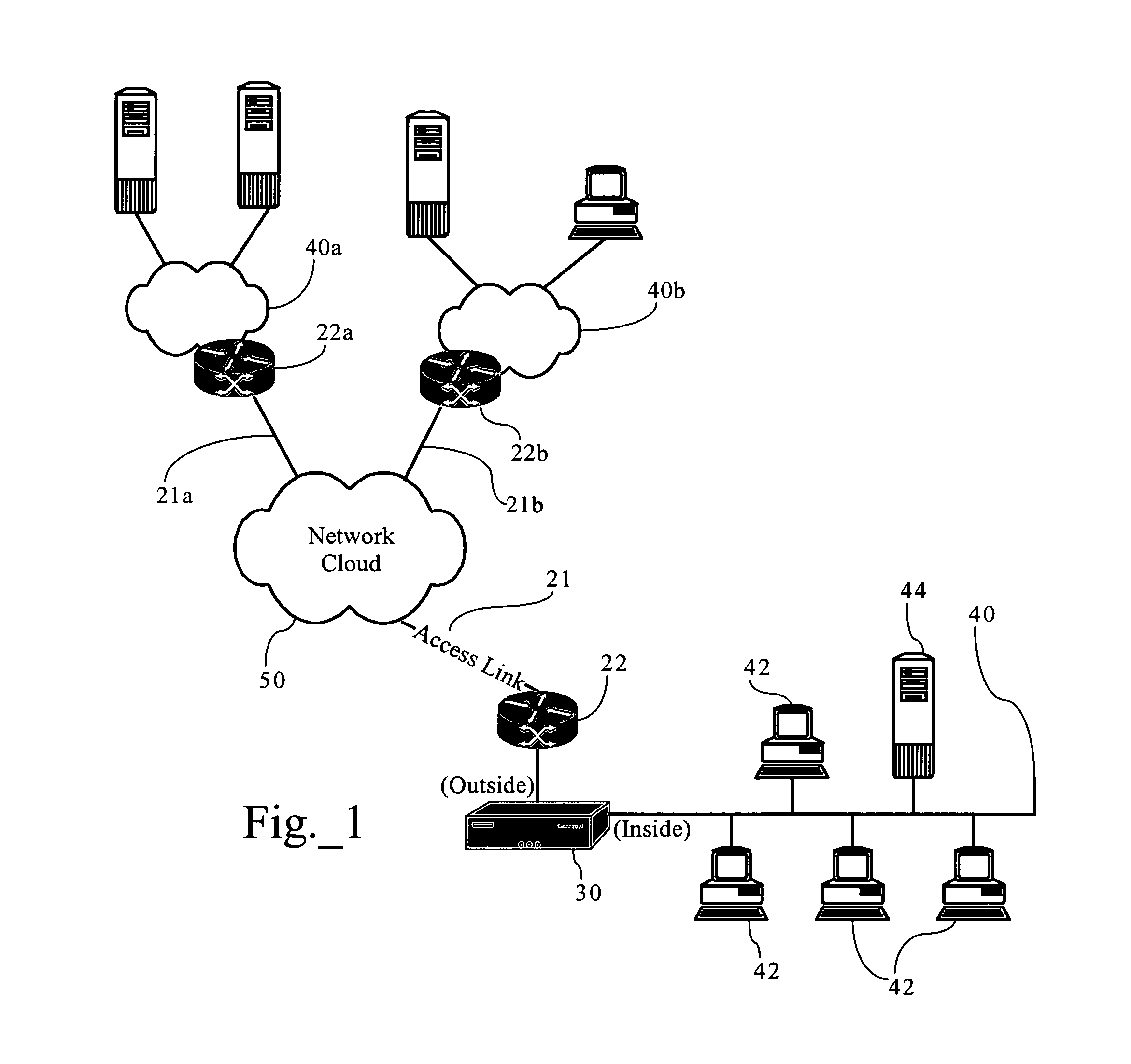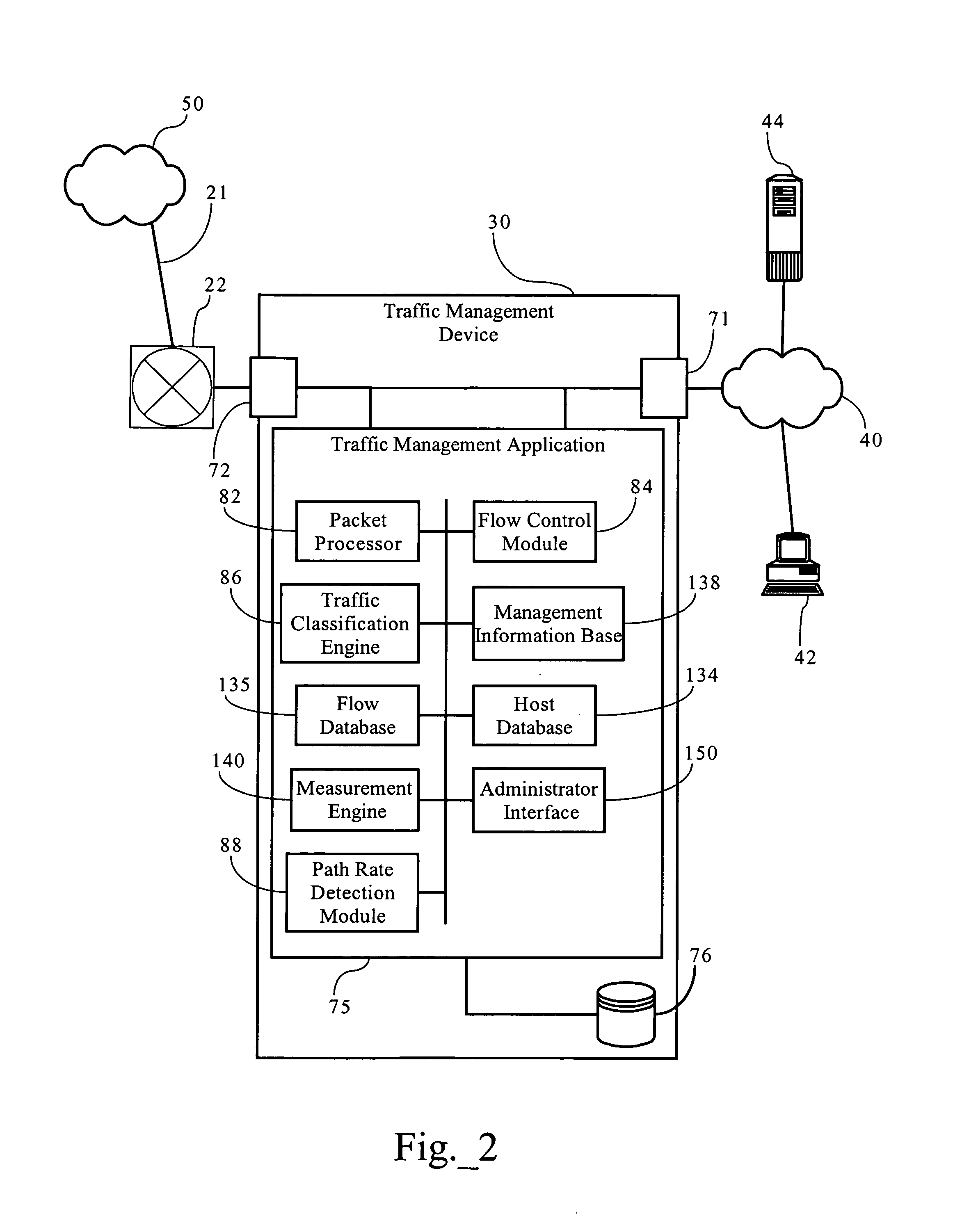Slow-start adaptive mechanisms to improve efficiency of bandwidth allocation
a technology of adaptive mechanisms and bandwidth allocation, applied in the field of network bandwidth management systems, can solve problems such as affecting data transfer speed, affecting data transfer efficiency, and reducing performance,
- Summary
- Abstract
- Description
- Claims
- Application Information
AI Technical Summary
Benefits of technology
Problems solved by technology
Method used
Image
Examples
Embodiment Construction
)
[0042]FIG. 1 illustrates a network environment in which embodiments of the present invention may operate. As FIG. 1 shows, network 40 interconnects several TCP / IP end systems, including client devices 42 and server device 44, and provides access to resources operably connected to computer network 50 via router 22 and access link 21. Access link 21 is a physical and / or logical connection between two networks, such as computer network 50 and network 40. The computer network environment, including network 40 and computer network 50 is a packet-based communications environment, employing TCP / IP protocols, and / or other suitable protocols, and has a plurality of interconnected digital packet transmission stations or routing nodes. Network 40 can be a local area network, a wide area network, or any other suitable network. As FIG. 1 also illustrates, traffic management device 30, in one implementation, is deployed at the edge of network 40 to manage data flows traversing access link 21. As...
PUM
 Login to View More
Login to View More Abstract
Description
Claims
Application Information
 Login to View More
Login to View More - R&D
- Intellectual Property
- Life Sciences
- Materials
- Tech Scout
- Unparalleled Data Quality
- Higher Quality Content
- 60% Fewer Hallucinations
Browse by: Latest US Patents, China's latest patents, Technical Efficacy Thesaurus, Application Domain, Technology Topic, Popular Technical Reports.
© 2025 PatSnap. All rights reserved.Legal|Privacy policy|Modern Slavery Act Transparency Statement|Sitemap|About US| Contact US: help@patsnap.com



